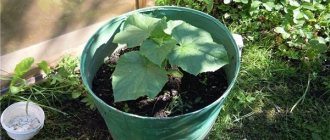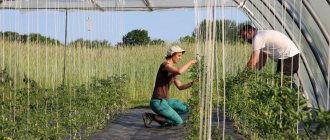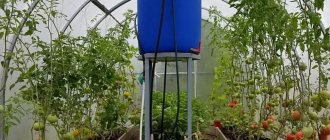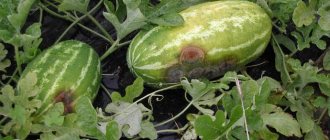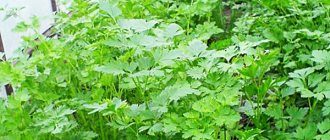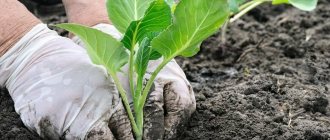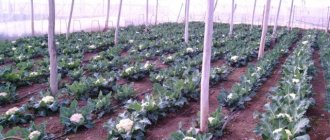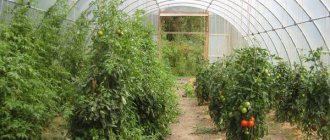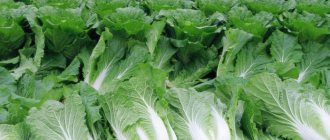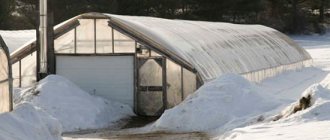Beets are a vegetable familiar to everyone since childhood, and also very healthy. It contains a lot of fiber, fructose, and pectin. A huge variety of dishes are prepared from it, both independently and as an addition to other products.
Beet
Of course, you can buy vegetables in the store, but it is much better to grow them yourself so that you know that the product is pure and good. But many do not consider it necessary to waste precious space in greenhouses and greenhouses on this vegetable crop. It seems that it does not need additional heat, good soil and special conditions, and it takes root well in the beds.
But in fact, planting beets in greenhouses has its advantages.
The construction of greenhouses lined with polycarbonate is becoming increasingly popular these days.
This material has proven itself well in the market. In polycarbonate greenhouses, the conditions created by the internal microclimate are better for plants.
But, of course, in an ordinary greenhouse you will also grow a good harvest, which can please not only you, but also your loved ones.
It seems that in order to grow this wonderful vegetable, you do not need any special knowledge, but it is still worth considering some features.
Greenhouse beet varieties
There are beet varieties specifically designed for greenhouse cultivation. They are also suitable for open ground, but only in regions with a warm climate.
Varieties suitable for growing in a greenhouse:
- Cylinder. The fruits are elongated, cylindrical in shape. The thickness of the root crops is 8-10 cm. The color is dark burgundy. Length – 15-18 cm. Weight – 300-600 g. Very heat-loving variety, seedlings die at +4°C. Does not tolerate shade well. The cylinder gives a yield of 10 kg per 1 sq. m.
- Ataman. Root vegetables are cylindrical. Color – dark red. Weight – 280-300 g. Productivity 10 kg per 1 sq. m. The variety is not prone to flowering.
- Single sprout. A variety with round and flat-rounded root crops. Color – dark purple. Weight – 300 g. Productivity – 4 kg per 1 sq. m.
- Red ball. Early ripening variety with rounded roots. Color – red. Resistant to color fade. From 1 sq. m harvest up to 6 kg of root crops. It is characterized by high keeping quality and marketability.
- Pablo F1. An early ripening variety with rounded roots. Weight – 110-180 g. Diameter – 10-15 cm. Pablo has good keeping quality. From 1 sq. m harvest up to 7 kg.
- Cold resistant 19. A variety of Belarusian selection. The roots are flat-rounded, dark red in color. Length – 6-8 cm, diameter – 10-12 cm, weight – 150-200 g. From 1 sq. m harvest 3-4 kg.
Varieties for greenhouses can also be grown in regions with harsh climates if planted in summer.
Seedless method
Many beginning gardeners think that planting beets is a troublesome and difficult process. In fact, it is not at all difficult, but you need to have at least basic knowledge.
In open ground
To make the seeds germinate faster, you need to soak them for a day in cold water or for 40 minutes in warm water (35 ° C). Also, to speed up the process, some gardeners use a growth stimulator, keeping the seeds in it for about a day.
The grains are placed in moist open ground to a depth of no more than 3 cm. The distance between rows is from 25 cm for large varieties, from 6 cm for small ones. The gap between bushes in a row is from 8-10 cm.
The seed is placed after filling the grooves with water and absorbing it. Since beet seeds are large in size, they are placed in the soil one by one. Many varieties produce 2-3 inflorescences, which means that thinning will be required at the initial stage of development.
While the plants are young, replanting of elongated shoots is necessary. They will take root easily. With the first thinning, excess weeds are removed from the garden bed and the soil is loosened, then mulched (for example, with sawdust).
The second thinning is carried out after the appearance of two paired leaves, when the root crop becomes about 1.5 cm in diameter. It is better to do thinning and weeding after rain or watering, this will make it easier to get rid of weeds. As the bushes develop, fertilizing is applied: first, organic matter, and then mineral fertilizers.
To the greenhouse
Proper seed preparation speeds up the appearance of the first shoots several times. The preparation is carried out as follows:
- choose the largest seeds;
- soaked in water or a solution with trace elements;
- germinate;
- disinfected and bubbling (treatment in water with oxygen or air).
The seeds are soaked at a temperature of 20-22°C, then they are collected in a cotton bag and placed in a container, periodically moistened, the procedure lasts 2 days. At the end, when the first shoots appear, the seeds are dried to a free-flowing state.
Advice . Soaking the seeds in a solution with mineral fertilizers will speed up the appearance of sprouts. Add 1 teaspoon of “Superphosphate” or soda to 1 liter of water; you can also use “Nitrophoska”.
After a day or less, the seeds are washed under running water. Disinfection of seed material is carried out with a weak solution of potassium permanganate - this is useful in the fight against root beetle.
Plants need to be thinned out after germination, leaving a distance between bushes of 8-10 cm.
If the seeds are planted in February, the harvest will be in May, and planting in March will bring the harvest in June, depending on the warming of the soil (the desired temperature is +8-10 °C). Per square meter you will need 1.5-2 g of seeds, which should be sown to a depth of no more than 3 cm.
The choice of variety is also important. Experienced gardeners for indoor soil recommend choosing the following varieties:
- "Bordeaux";
- "Ataman";
- "Red Ball";
- "Cylinder";
- "Single-germ";
- "Cold-resistant";
- "F1-Pablo";
- "Detroit".
In addition, breeders have developed special varieties that are well suited for cultivation in a greenhouse. These include Boltardi, Pablo and Burpees Golden.
Seedling
By growing beets with seedlings, you can bring the harvest closer by 2-3 weeks. Seedlings are usually grown at home. They are sown so that they grow by the time when favorable conditions for growth and development are created in the greenhouse.
Between sowing the seeds and planting the seedlings in the greenhouse, 3-4 weeks pass.
Seed preparation
Beet seeds are ball-shaped fruits that are difficult to pre-sowing preparation. Purchased pelleted seeds are completely ready for planting - they can be sown without soaking or other processing, by moistening only the substrate.
Many gardeners, wanting to activate seed germination, treat them before sowing. But it is carried out only in relation to seeds collected independently or unprocessed.
Stages of seed preparation:
- Sorting. Place the seeds in salted water. All that pop up - discard.
- Calibration Remove specimens that differ from the normal size so that the shoots are friendly.
- Disinfection. Immerse the seeds in a fungicidal solution. Fitosporin, Vitaros and others are suitable.
- Soak. Place the planting material in a canvas bag and place it in cool water for 24 hours. Then keep in warm water (+35°C) for another 24 hours. This treatment accelerates the emergence of seedlings.
Features of sowing beets
Beet seedlings are demanding of soil moisture, love fresh air - but not drafts, and do not tolerate heat. Optimal temperature for its development: +16°C.
Seedlings are sown in any container - plastic or wooden, individual or common. In the second case, you will have to pick at the stage of appearance of cotyledon leaves. The best option is glasses designed for one seedling or peat pots.
How to sow seeds for seedlings:
- Prepare the soil. The best option is to buy a universal substrate. Add wood ash to it - a glass on a bucket of soil.
- Fill the seedling containers with soil. Compact it well, pour warm, settled water. Spray the substrate with Fitosporin or another fungicide to disinfect it.
- Sow the seeds to a depth of 1-2 cm. If planting is done in separate cups, place 1 seed in the center. In large containers, place the seeds in rows 2-3 cm apart.
- Sprinkle the seeds with soil and compact with a plank. Cover the crops with film or glass and place in a warm place.
Growing seedlings
To grow strong and healthy beet seedlings, it is necessary to provide them with appropriate care.
Optimal growing conditions for seedlings:
- Humidity. Beet seedlings react equally poorly to dry soil and stagnant water. When watering, it is important to maintain a balance, avoiding drying out and waterlogging of the soil. Watering is carried out regularly, but in small portions. The water that accumulates in the pan after watering is poured out. If the air is extremely dry, the seedlings are sprayed with water at room temperature.
- Illumination. The best place is windows facing south. In regions with late spring, additional lighting up to 12 hours of daylight is necessary.
- Temperature. Before germination, the temperature is maintained at +18...+20°C, and after their emergence, the transparent cover is removed, lowering the temperature to +16°C.
- Feeding. When using a purchased substrate, there is no need for additional fertilizers. If seedlings are grown in a soil mixture prepared independently, fertilizing may be necessary. Complex mineral-based fertilizers with a priority nitrogen content are used.
- Hardening. A week before planting, the seedlings are taken outside every day, gradually increasing the time of “walks” - from 20 minutes to several hours. It is also recommended to carry out night hardening, lowering the temperature by several degrees.
If the seedlings were grown in a common container, pick them. It saves seedlings from lack of light and crowding.
Features of picking beet seedlings:
- At the cotyledon leaf stage, the seedlings are transplanted into separate containers.
- The soil in new containers should be of the same composition as in the general container.
- The seedlings are planted a little deeper than in the old container.
- It is recommended to shorten the root slightly. Pinching allows you to get a larger root crop in the future.
Requirements for soil mixture
When to sow leeks for seedlings
Soil for growing seedlings can be bought at a specialized store, but many summer residents prepare the mixture themselves (fortunately, the garden is at hand). The optimal soil for beets is neutral or slightly acidic fertile (with a pH of 6.0). Humus can be added to greenhouse soil in a 1:1 ratio.
If the acidity is not suitable, the soil mixture is limed with tuff, slaked clay or chalk. Additionally enriched with mineral compounds:
- urea – 6 g;
- magnesium sulfate – 2 g;
- potassium sulfate – 8 g;
- superphosphate – 15 g.
An experienced summer resident may have his own recipes. Beginners are recommended to use concentrated factory-produced fertilizers or use the following soil composition: 2 parts each of compost (humus) and turf (garden) soil, as well as part sand and 4 parts peat.
Any mixture prepared for seedlings must be disinfected - heated in the oven or kept in steam for half an hour. After this, the soil mixture is sealed in a bag and kept in it for a week. Thanks to this, beneficial bacteria will appear in the soil, enriching the soil. With such preparation you can always expect good harvests.
The soil mixture is additionally enriched with mineral compounds
Land preparation
Beets grow best on sandy and loamy soils. Not only the size of root crops, but also their taste depends on the quality of the soil. On waterlogged soils, beets will grow tasteless; root vegetables have a liquid, unpleasant taste. On soils with a high sand content, a similar effect is obtained.
Soil preparation:
- Compound. Beetroot, like most crops, requires loose, light, non-acidic soil. Greenhouse soil is made from:
- garden soil - 1 part;
- peat – 3 parts;
- humus – 1 part;
- sand - 1 part.
- Disinfection. The soil is disinfected before use using any of the existing methods:
- calcination;
- chemicals;
- freezing.
- Fertilizers. Loosen the finished mixture and distribute it over the beds. Add ash - one glass per 1 sq. m. and complex mineral fertilizer (dosage according to instructions).
- Acidity adjustment. Beets grow poorly in acidic and slightly acidic soils. To neutralize acidity, in the fall, before digging, add limestone or sand - 0.5-1 kg per 1 square meter. m.
When growing beets in a greenhouse, as in open ground, you must follow the rules of crop rotation.
Desirable predecessors:
- onion;
- cabbage;
- tomatoes;
- cucumbers
It is forbidden to plant beets after rutabaga, turnips or celery.
Features of care
The main care of greenhouse beets consists of timely weeding, watering and loosening, as well as compliance with microclimatic conditions that are optimal for the formation of root crops in the shortest possible time.
Table beets are very responsive to regular watering and high-quality care requires abundant irrigation of greenhouse soil. In addition, high-quality root crops will not be obtained when growing this vegetable crop on acidic soils. To bring the soil pH as close as possible to optimal values, you should add ash, lime or dolomite flour.
The standard distance between young plants should be about ten centimeters. If there are more dense crops, thinning should be done. As soon as the root crops reach a diameter of five centimeters, mineral fertilizing is required, including nitrogen, phosphorus and potassium. The use of mullein solution in a ratio of 1:7 has a very good effect on beets of any variety.
Table beets are very responsive to regular watering and high-quality care requires abundant irrigation of greenhouse soil
Greenhouse table beet is responsive to the addition of sodium, and its lack causes a sharp reddening of the leaves of this vegetable crop. When the first signs of such a deficiency appear, the beets should be watered with salt water. In addition, such salt irrigations have an excellent effect on the sugar content of root crops, which makes it possible to use such irrigations to improve the taste of table beets at least three times during cultivation. Otherwise, caring for table beets does not differ from the rules for growing other root vegetables.
Dates and methods of planting
In a greenhouse, beets are grown through seedlings or direct sowing into the ground. The first option allows you to get an earlier harvest, the second eliminates the stage of growing seedlings.
Beets are planted in the greenhouse around the second half of April. When planting, they focus more on air and soil temperatures than on the calendar date.
Methods for planting beets:
- Seeds. Spaces of 25-30 cm are made between the rows. The seeds are laid out along the grooves or according to a special stencil. The distance between adjacent seeds is 3-4 cm. Planting depth is 2-3 cm. The crops are mulched with peat or humus.
- Seedlings. When the seedlings reach 8 cm in height, they are planted in rows, maintaining intervals of 15-20 cm. Spaces of 30 cm are left between the rows.
Harvest and storage
The first juicy beet roots of early varieties are harvested already in July. Late-ripening beets, which can be stored until the end of spring, are dug up in early autumn, when the leaves turn yellow and begin to dry out.
Choose a dry day for cleaning. First, dig up the root crops with a pitchfork. Then, holding the tops with your hands, they are pulled out of the soil. Using the blunt end of a knife, carefully remove the soil from the root crop, and cut off the leaves with the sharp end, leaving up to 2 cm of petioles. Spoiled root vegetables (damaged, rotten) are immediately separated. Selected beets are dried in the fresh air, and then for about a week in well-ventilated rooms (sheds), where the sun does not shine.
Selected beets are first dried in fresh air
Trimmings of spoiled and substandard root vegetables are immediately processed, prepared for borscht seasonings and canned salads.
Canned beet salads are an excellent preparation for the winter.
When the petiole sections are dry, the beets are dusted with chalk and stored in the cellar. Root vegetables are best preserved at temperatures from 0 to 2ºC, in rooms with good ventilation. In warmer places, beets deteriorate and begin to “wrinkle” and rot.
A proven method is to store root vegetables on stands of 15 cm or more in wooden or plastic lattice boxes located 20 cm away from the wall. The rows of beets in the boxes are sprinkled with sand, dry peat or sawdust from coniferous wood (3–4 cm layers).
Beetroot lasts much longer in sand
Many gardeners practice storing beets in bulk on top of potatoes. Root vegetables are filled with moisture evaporating from potatoes and dry out less.
Caring for beets in a greenhouse
Beetroot is a strong and hardy crop that can grow under unfavorable circumstances. But the gardener’s task is to get a good harvest. And it’s not just about quantity, but also about the quality of root crops. The taste of beets will depend largely on care - fertilizing, watering, etc.
Watering and fertilizing beets
Beets are watered based on the condition of the soil. Just like when growing seedlings, it is necessary to maintain a balance between waterlogging and drying out the soil.
Principles of watering beets:
- After planting, seedlings are watered every 2-3 days. There is no exact watering rate. It is necessary to monitor the condition of the soil - it should be moist throughout the depth of the roots.
- As they grow older, the frequency of watering decreases. Beets are watered about once a week.
- The average watering rate for adult plants is 10-15 liters per 1 square meter. m.
- It is useful to water the plantings with a weak solution of potassium permanganate.
If the soil is prepared and fertilized according to all the rules, then beets do not need fertilizing. Perhaps in the middle of the growing season it is worth adding wood ash to the soil - 100-150 g per 1 sq. m.
Thinning
Beet seeds are infructescences that produce several shoots at once. Therefore, after sowing, thinning cannot be avoided.
Excess shoots should be removed immediately after the first leaves appear. There should be approximately 8 cm between neighboring plants - if a dessert variety is grown, and 10-12 cm - if you need to get larger root crops.
If the excess seedlings are not uprooted, but removed with a small spoon, then they can be replanted. But this must be done immediately, then the chances that the seedlings will take root are very high.
Health benefits of beets
Beets are filled with essential vitamins and minerals but are low in calories. They also have medicinal properties. Studies have confirmed that beets can naturally lower blood pressure by 4-10 mmHg. in just a few hours.
They are often used by athletes. It contains nitrates, which strengthen your cells. Nitrates may also promote mental health and cognitive function by improving the dilation of blood vessels and therefore increasing blood flow to the brain.
Beets contain dietary fiber, which can improve digestion. It prevents digestive disorders such as inflammatory bowel disease, constipation and diverticulitis. The fiber in beets may help improve weight loss by reducing food cravings and increasing feelings of fullness, thereby reducing overall calorie absorption.
Diseases and pests
Beets have fairly high immunity. Moreover, there are varieties that are particularly resistant to certain diseases.
Under unfavorable circumstances and lack of prevention, beets can be affected by the following diseases:
- Corneater. Occurs due to waterlogging. It usually appears in the early stages of the growing season. Plants turn yellow and die. Disease prevention:
- application of boron fertilizers;
- liming;
- seed dressing.
- Fomoz. Brown spots appear on the lower leaves, and then black dots. Treatment:
- application of borax under the root – 3 g per 1 sq. m;
- spraying with a solution of boric acid (5 g per 10 liters of water).
- Cercospora blight. Light spots with a red border appear on the leaves. Then the leaves dry out and the roots spoil. Treatment is reduced to treatment with fungicides. Before sowing, seeds are treated with Agat-25. Potash supplements are also recommended.
- Fusarium rot. Affects damaged plants. Cracks appear on the roots, and the lower leaves wither. Preventative spraying with boron is needed.
Most often, beets are affected by the following pests:
- scoops;
- shield carriers;
- aphid;
- flea beetles;
- common and leafminer flies.
It is better to treat plantings using traditional methods, using insecticides only in the most extreme situations.
Ways to control insects:
- An infusion of onion peels or wormwood helps against aphids. Take 1 kg of finely chopped dry mass per bucket of water. Boil for 15 minutes. Leave for 3 hours and filter.
- Aphids and stink bugs are repelled by wormwood branches placed between the rows.
- Fleas are driven out by dusting with ash or tobacco dust. Spraying with infusion of ash also helps. It is prepared by diluting 1.5 tbsp. l. in a bucket of water. Leave the ash for 1 day.
- Bacterial preparations or insecticides, for example “Aktaru”, “Karbofos”, “Iskra”, are used against flies, bugs and other pests.
How to prepare seeds for planting
Beets contain many vitamins and microelements. Even when boiled, this product retains all its beneficial properties. Before planting beets, gardeners have a question: how to properly prepare the seeds for sowing to get a good harvest?
Beet seeds germinate very slowly, so it is important to prepare them correctly for sowing. This process is carried out in several stages.
Selection and processing, germination
At the first stage we perform calibration. We select only large, undamaged specimens. If there are a lot of them and it is difficult to select them manually, sift them through a large sieve or colander. Small and damaged specimens are thrown away.
The following solutions are used for processing:
- boric acid solution (1 g per 5 liters of water);
- manganese solution (1 g per half bucket of water);
- ash solution (1 tbsp per 1 liter of water);
- copper sulfate (1 g per half bucket of water);
- infusion of calendula and chamomile;
- growth stimulants (Epin, Zircon, Agricola Vegeta, etc.).
The seed material is soaked in a container with a solution for 10-12 hours.
The next step before planting is to lay them out on a cotton cloth or napkin, moisten them with water and place them in a container. All this is put in a warm place with a temperature of 20-22°C.
Periodically, the fabric is gradually moistened with water so that the germinating seeds are constantly moist. The seed material is kept in a damp cloth for 2 days. The contents are periodically ventilated to prevent mold from forming.
As soon as the first white sprouts appear, they begin land work. The advantage of this preparation is that the seeds germinate already 4-6 days after planting. That is, much earlier than when using dry seed.
Growing beets in a greenhouse in winter
To grow vegetables year-round, greenhouses are heated. Then vegetables can be collected all year round. True, their cost due to heating costs will be much higher, so this method is usually used when growing vegetables for sale.
Greenhouse requirements
In a year-round greenhouse, plants should be equally comfortable at any time, including in winter.
Requirements for a winter greenhouse:
- the ability to provide the desired temperature and humidity;
- a lot of sunlight and artificial lighting;
- solid foundation;
- optimal design - with a pitched roof;
- the presence of a vestibule and double doors;
- possibility of ventilation;
- heating source - for example, an electric boiler or wood stove;
- on both sides there are heating pipes.
It is recommended to bury the greenhouse to reduce heating costs.
The most popular greenhouse design option is a welded frame. And as a coating they use:
- industrial tempered glass;
- plastic film;
- cellular polycarbonate.
Preparing seedlings
Seedlings for growing in winter in a greenhouse can be grown in two ways:
- At home. This option allows you to save on heating costs.
- In the greenhouse. This option is usually used when a large number of seedlings are needed. It is recommended to grow seedlings in a separate greenhouse, since the conditions for seed germination differ from the conditions in which adult plants grow. During the germination stage, lower temperatures and higher humidity are needed.
The agricultural technology of seedlings for winter cultivation is the same as for the spring-summer season. The soil is prepared according to the same plan as when planting in unheated greenhouses.
Features of care
To grow vegetables in a greenhouse in winter, you need increased attention to growing conditions and careful care.
Conditions in the greenhouse in winter:
- The average daily temperature is maintained at +18 to +22°C.
- When there is severe frost outside, ventilation is canceled.
- When the outside temperature rises, the greenhouse is ventilated twice a day.
- Water the plantings 1-2 times a week as the soil dries.
- The water temperature should be the same as the air temperature in the greenhouse.
When to plant beets for seedlings
The timing of planting beets depends on the climatic conditions of a particular region.
For example, in Siberia, the Urals or in the middle zone, the crop is planted no earlier than May, mainly in the second half. In southern latitudes, beet seeds are sown in the second half of March or April. In the regions of the middle zone - from early to mid-May.
Also, most gardeners rely on the lunar calendar for better plant germination. The best time is considered to be the period of the waning moon. At this time, the plants take root well and grow.
It is not advisable to plant seedlings and sow seeds during the new moon and full moon. Plants planted at this time do not take root well and grow slowly.
Reference . Favorable days for planting according to the lunar calendar vary between calendar years. The lunar calendar does not depend on the traditional one.
Beet yield when grown in greenhouse conditions
In greenhouses, mainly varieties with early ripening are grown. The yield of early beets in a greenhouse depends on the variety and growing conditions. It can range from 1.8 to 8.2 kg per 1 sq. m.
Ways to increase productivity:
- Use suitable soils. It is prohibited to use podzolic and sandy soils.
- Compliance with watering standards. Overmoistening is prohibited.
- Fertilizer application. It is prohibited to introduce manure into greenhouses. The soil is fertilized with humus and superphosphate.
- Good seeds are selected by sizing, sorting and soaking.
Growing beets in a greenhouse is not a priority - this crop grows well in open ground. But if a gardener expects to get early harvests, he cannot do without greenhouse conditions.
0
0
Copy link
General information
Growing table beets in greenhouses has a number of advantages over planting this vegetable crop on ridges in open ground conditions. One should take into account the fact that this vegetable, unlike onions and carrots, is not a frost-resistant crop and growing a beet crop in a greenhouse is quite justified. The agricultural technology of such planting has some peculiarities, and in addition, it is recommended to pay attention to varieties that are bred specifically for cultivating vegetables in protected soil conditions.
Growing juicy table beets in greenhouse structures not only makes it easier to care for the plants, but also allows you to get a more stable and early harvest
Growing table juicy beets in greenhouse structures not only makes it easier to care for plants, but also allows you to get a more stable and earlier harvest, and the root crops with such cultivation are distinguished by a more even shape and large size.
Another important advantage is the ability to grow varieties zoned for planting in the southern regions. These varieties of beets are distinguished by excellent taste and quality. Protected soil becomes a reliable protection for plants from many pests and allows you to obtain undamaged leaves, which are very useful to eat when preparing first courses and salads.
Secrets for beet super harvest
- Never overdry beets. It can still withstand a slight lack of water, but not severe drought. Since the root vegetable itself is juicy, and the salad leaves also need moisture, without water the whole plant will suffer. And if you constantly underwater the beets, you will end up with a woody and tasteless root crop.
- Mulch the beet bed. Then you won’t have to worry about drying out the soil and malicious weeds. This can be done with old sawdust or peat.
- When rich lettuce leaves begin to grow, do not be lazy in picking or cutting them. This way you will leave juices for the root crop for greater growth and active ripening, and provide yourself with healthy greens.
Video: the intricacies of growing beets, how to improve taste and keeping quality
Thus, using all the above rules and tips, you can grow beets without much difficulty and get an early, excellent harvest. In conclusion, let us remind you that this vegetable can easily cope with anemia, malaise and vitamin deficiencies.
- Author: Natalya Varnavskaya
26 years old, blogger, farmer, young mother, illustrator, graphic designer, freelance correspondent. Higher education in the humanities. I live in Siberia, Ulan-Ude, Republic of Buryatia. Extensive experience in growing garden crops. Rate this article:
- 5
- 4
- 3
- 2
- 1
(21 votes, average: 3.7 out of 5)
Share with your friends!
Site selection, crop rotation
Rules for choosing a place for beets:
- beets love space; the sparser the root crops are planted from each other, the more space they have for growing rounded barrels;
- if there is no need for large plantations of this root crop, beets can be planted in a border method next to potatoes, cucumbers, beans, next to greens or onions;
- beets need frequent irrigation, but stagnation of water will lead to rotting, which means the bed must be laid out next to the watering source in a well-drained area;
- Beets are not planted twice in a row in the same place; crop rotation is observed very carefully;
- the preceding plants for this vegetable are onions, garlic, potatoes, tomatoes, eggplants, carrots, zucchini;
- It is undesirable to plant beets after cabbage and for the second year in a row in one place.
If you have to displace any crops in the garden by planting them on poor soil, then you can safely do this with beets. Its growth can be ensured by good loosening of the soil, timely watering and fertilizer.
Possible difficulties
Possible problems include the moment when the seedlings rapidly stretched out.
Several factors could have contributed to this:
- the planting was carried out very tightly, which led to thickening;
- the seedlings were kept at home for too long;
- active watering;
- lack of light.
Knowing the reasons for the pulling of seedlings, it is necessary to eliminate them in a timely manner. You can transplant it to a brighter place and temporarily stop watering. If the reason was overexposure of the seedlings at home, then it is recommended to shorten the root and add soil.
Watering and fertilizing
After germination, beets need to be watered frequently - once every two to three days, alternating watering with shallow loosening so as not to damage the roots. There is no need to hill this root crop. But it is good to form a hog between the rows of beets, along which water will flow. In case of soil erosion, add a thin layer of humus on top.
Loosening can be replaced by mulching. A layer of crushed dried grass placed between the rows will help conserve moisture.
A one-time application of mineral fertilizers before planting is sufficient for beets. It makes sense to carry out additional fertilizing only if the plants are noticeably stunted in growth.
Periodic watering of beets with diluted herbal infusions or yeast fertilizers is suitable as preventive fertilizing.
Two or three times a season you can water the beets with salted water at the rate of one tablespoon per 10 liters of water. Or use complex fertilizers according to the instructions, for example, Makbor.
Root crops accumulate nitrates more actively than other crops. When growing beets, it is better to opt for natural fertilizers.
Features of winter and spring sowing
Beets are crops planted both in spring and before winter. If the seeds overwinter safely, you will be able to get early beets without growing seedlings.
Pre-winter sowing of beets
In late autumn, when winter crops are sown, beets begin to be sown. The winter beet harvest ripens 2-3 weeks earlier than its counterparts sown in the spring.
Features of winter sowing:
- The optimal sowing time is the last days of October or the beginning of November, when the soil has already cooled.
- Even if the snow has already fallen, you can sow. The main condition is cool soil so that the seeds do not sprout. They should only swell in the soil, nothing more.
- For winter sowing, choose seeds that are resistant to cold.
- In autumn, the number of seeds planted should be 20% more than in spring.
- The varieties most suitable for pre-winter sowing are those that are resistant to flowering and bolting.
- In order for the seedlings to emerge as early as possible in the spring, the seeds are planted on the ridges. On the formed ridges, grooves 5-6 cm deep are made.
- Seeds placed in furrows are sprinkled with a mixture of substrate and humus. The crops are insulated with compost.
Spring sowing of beets
Spring sowing is most common among gardeners. This is the simplest and most win-win option for growing table beets, practically devoid of risks and surprises.
Features of spring sowing:
You can plant the seeds dry, without soaking. Especially if it rained shortly before sowing and the soil was wet.
The looser and lighter the soil, the deeper the seeds are planted. The planting depth during spring sowing varies from 2 to 4 cm. You can learn about the intricacies of planting beets in the following video:
What to do if the beets have grown big?
Too large beets can please only inexperienced gardeners. Abnormally large root vegetables often have a fibrous texture and poor taste. They take a long time to cook and are poorly stored.
To avoid root overgrowth:
- Leave intervals between adjacent plants appropriate to the variety.
- Dig up the roots when they reach the appropriate size for the particular variety. The optimal size for most varieties is 5-6 cm in diameter.
Large root crops can be used as livestock feed. They are added to mash mixtures or cut into pieces.
What to do if beets do not sprout?
It is important to correctly identify the reasons for the lack of seedlings and, as a result, eliminate them. The lack of seedlings can be affected by the following:
- Poor quality seeds that could have deteriorated due to improper storage or have expired. To avoid such a problem, it is better to germinate the seeds before sowing.
- Incorrect care. This can include excessive watering or, conversely, lack of moisture. Poor quality soil, excess fertilizer. Unfortunately, there is nothing to help here. We'll have to replant.
- Incorrect location of the container with seedlings - too dark and cold place. Transferring to another, more suitable place will help here.
The greenhouse effect of covering with film will help speed up the germination process.
By following the previously described rules for planting and caring for beet seedlings, with a little effort and skill, it will not be difficult to achieve good seedlings.
Read more about soil preparation and microelements
Any universal, fertile, factory-produced soil for vegetables is suitable for beets.
If you want to collect land from your garden, be careful. It is important to know what crops grew before beets in this area. The best predecessors are potatoes, cucumbers, cauliflower and cabbage, kohlrabi, onions, and all types of salads. Especially if organic fertilizers were applied to them last year. These vegetables processed the earth very well, leaving the most relish for our culture.
Planting beets in open ground
Beets, like many vegetable crops, can be grown by sowing seeds directly into the ground or through seedlings. Many gardeners prefer to sow beets directly as seeds in an open garden bed.
Preparing soil and beds
Preparations for planting beets should begin with preparing the site. This should be done during the autumn digging of the garden. It is then that we need to plan places to accommodate garden residents for the next season and prepare each site accordingly. A well-lit place should be allocated for the beets, since only with a sufficient amount of light will the beets have a rich color.
Beet roots contain a mixture of pigments, the main one being betanin.
The vegetable loves fertile, loamy or sandy loam soil with a neutral acidity level. When preparing beds for beets, you must do the following:
- remove plant debris;
- fill the soil with organic matter (4 kg of compost or 3 kg of humus per square meter);
- apply mineral fertilizers (20 g ammonium nitrate, 40 g superphosphate, 15 g potassium chloride per 1 sq. m);
- to reduce the percentage of soil acidity, add lime or dolomite flour (from 0.5 kg per 1 sq. m);
- dig the area to the depth of a spade bayonet.
In the spring, the soil in the prepared area will only need to be loosened.
Seed preparation
People say: “Do not expect a good tribe from a bad seed.” Therefore, the next important stage in planting beets is preparing the seeds. They must be pure varieties and have high germination rates. The preparation of seed material is carried out in several stages:
- First, the seeds are calibrated. To do this, pour all the seed onto a white sheet of paper and manually sort the seeds by size, selecting damaged, ugly and too small ones. The best option is to select seeds of the same size. They will have the same reserves of nutrients, so they will produce uniform shoots, which will make caring for the crops easier.
Calibration allows you to select large seeds that have high germination capacity, germination energy, contain a large supply of nutrients and, as a result, produce powerful productive plants
- For the emergence of friendly and quick shoots, it is recommended to wet the beet seeds. To do this, they are placed in a container and filled with clean water at room temperature for a day, which is recommended to be changed several times. Experienced gardeners advise first keeping the seeds in water (preferably in melted water), and after they swell and absorb a certain amount of moisture, place them in a solution with a growth stimulant, which will speed up the germination time of the seeds. Special formulations (Epin, Kornevin, etc.), folk remedies (aloe juice, ash infusion, mushroom decoction, honey solution, potato juice) can act as stimulants.
- To germinate, you need to take a container, place a damp canvas cloth on the bottom, spread the soaked seeds on it and cover the top with a damp cloth as well. Place the container in a warm place, make sure that the fabric is constantly moistened. If the seeds are of high quality, then after 3-4 days about 80% of them will sprout.
It is recommended to germinate beet seeds before planting.
Some online sources recommend vernalization of beet seeds, that is, after soaking, the seeds must be placed in the cold. This advice should be taken with caution, as the procedure can provoke premature formation of flower stalks.
Landing dates
Many gardeners sow beets twice per season:
- early spring - for use in summer;
- in the summer (no later than the beginning of July) - for storage.
Table: timing of beet germination depending on soil temperature
| Soil temperature | Time of emergence |
| +4 | up to three weeks |
| +10 | about 10 days |
| +15 | about a week |
| +20–25 | 3–4 days |
| above +25 | may be detrimental to seeds and seedlings |
Experts say that the optimal time for sowing beet seeds in the ground is a soil temperature of +8–10 degrees. At this time, soil moisture that is comfortable for seeds is maintained, and a further increase in temperature will have a beneficial effect on the growth of root crops and the abundance of the harvest.
Methods for planting beets with seeds in open ground
If on collective farms the main methods of planting beets are square and square-cluster, as they make it possible to mechanize the soil along and across the rows, then in personal gardens, vegetable growers widely experiment with arranging beds.
Traditional way
In this case, grooves are made in the garden bed at a distance of 10 to 35 cm from each other. This value depends on the variety and the purpose of cultivation: if you need medium-sized beets for pickling, then the row spacing can be kept to a minimum; for growing root crops for winter storage, choose the greatest distance. It is preferable to make the furrows longitudinal, about 4 cm deep.
To press furrows for planting beets, you can use a long straight board
Then the furrows are watered, and after the water is absorbed, the seeds are laid out. It is necessary to take into account the peculiarity of the beet seed: its infructescence consists of several fruits fused into a ball, that is, several plants will grow from one seed. Therefore, it is better to spread the seeds at a distance of 5–6 cm, and then sprinkle them with a two-centimeter layer of soil.
Beet seeds are large, so it’s easy to spread them out at the right intervals between each other.
It doesn’t make much sense to use prepared toilet paper strips for planting beets: The seeds of this crop are quite large, the paste doesn’t hold them well, so it’s faster to just sow them in the garden than to glue them on paper.
Sowing beets in a warm bed
In many vegetable gardens you can see equipped warm beds. The principle of its operation is that organic waste placed inside the bed nourishes the plants and creates a comfortable temperature regime for them.
When grown in a warm bed, the growth and development of beets occurs much faster, and it will acquire immunity to various diseases.
A warm bed is arranged in different ways:
- You can put organic raw materials in a dug trench. In this case, the bed will be almost level with the ground;
- raised beds are made in a special box, which is filled with plant debris and soil.
In both cases, it is important to follow the basic rules of arrangement:
- Large branches, thick plant stems, and cuttings of boards must be placed at the base of the bed;
- Before laying the next layer, the previous one must be watered;
- Only waste from healthy plants, not affected by pests and diseases, is used for planting.
Such a bed can be used for several years in a row, but it is not recommended to plant beets on it for the first two years. The vegetable is capable of accumulating nitrates, and at first the soil in the garden bed is saturated with nutrients due to the active decomposition of organic matter.
When grown in a warm bed, beets must be watered abundantly and regularly, only in this case the bed will fulfill its purpose.
Sowing beets in a narrow bed
A ridge with a width of 30 to 90 cm is considered narrow, with the obligatory arrangement of wide passages - up to one meter. It can be built according to the principle of a warm bed, and then it will serve you for several years.
When grown in a narrow bed, each plant receives sufficient heat and light
For sowing beets, the optimal width of the bed will be 45 cm. In this case, the seeds are planted in two furrows made along the edges. You need to care for plants planted in a narrow bed in the same way as in a regular one, but the advantages of such planting are obvious:
- all plants receive enough light. There is no shaded middle row, but it is on it that smaller root crops most often grow;
- it is convenient to loosen the soil between the lines using any mechanical devices, including a Fokin flat cutter;
- You can mulch the plantings better and prevent the soil from drying out.
Beetroot in mixed plantings
Many vegetable and flower crops, as well as herbs, are not only compatible with each other when grown, they have a beneficial effect on each other. Mixed plantings of vegetables avoid soil depletion, since different crops have different nutritional requirements, which means the soil will not be depleted of any one element . When organizing mixed beds with the participation of beets, you need to pay attention to the following points:
- compatible plants that have a beneficial effect on the growth and development of beets are: all types of cabbage, onions, cucumbers, lettuce, zucchini, garlic, legumes;
- Unfavorable neighbors are: potatoes, Sarepta mustard, beans, corn, chives.
There is an opinion that root secretions of beets have antibiotic properties, so adding them to some crops, in particular carrots, has a healing effect on the latter.
When organizing joint plantings, you need to take into account the powerful foliage of beets, so the distance between plants should be sufficient so that the vegetable does not shade neighboring crops.
Video: the intricacies of planting beets in open ground
Preparing the soil for beets
The soil is dug up in the fall after careful harvesting of the previous harvest. Organic components (compost or manure) are applied as deeply as possible - 30-35 centimeters. You can organize some semblance of a warm bed, but with a thin layer of organic matter so that it has time to decompose by the time the beet root grows into it.
The acidity of the earth is reduced by scattering dolomite flour, ground eggshells or wood ash.
It is better to apply mineral additives - superphosphate and potassium sulfate - in the fall so that they have time to dissolve in the soil. They are scattered dry over the bed before digging at a rate of no more than 0.3 kg. per square meter of land.
The root crop develops better in loose soil. In the spring, it is good to dig up the bed again and mulch it with peat or rotted sawdust.
